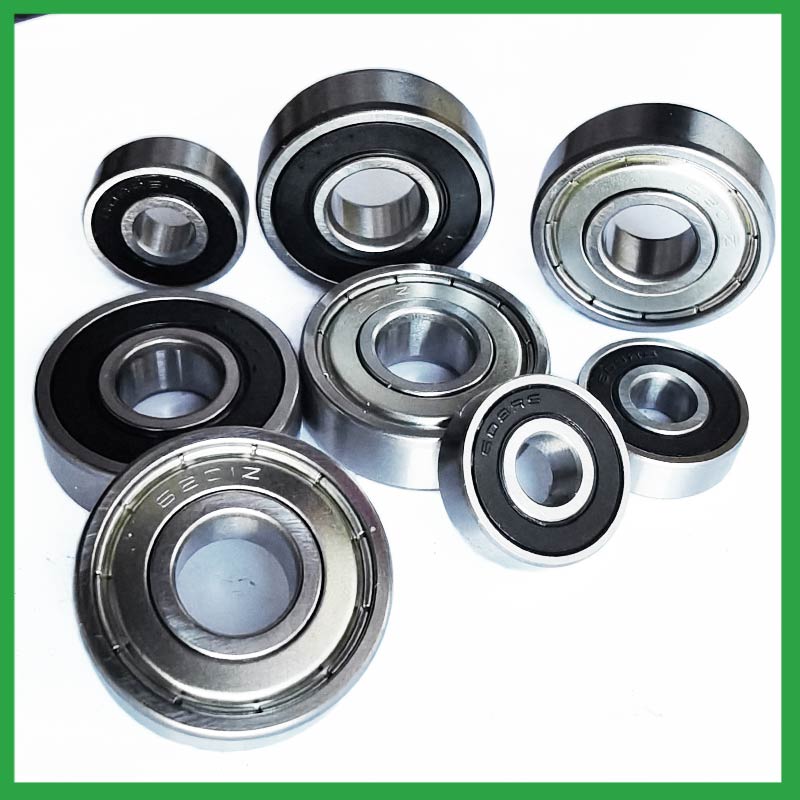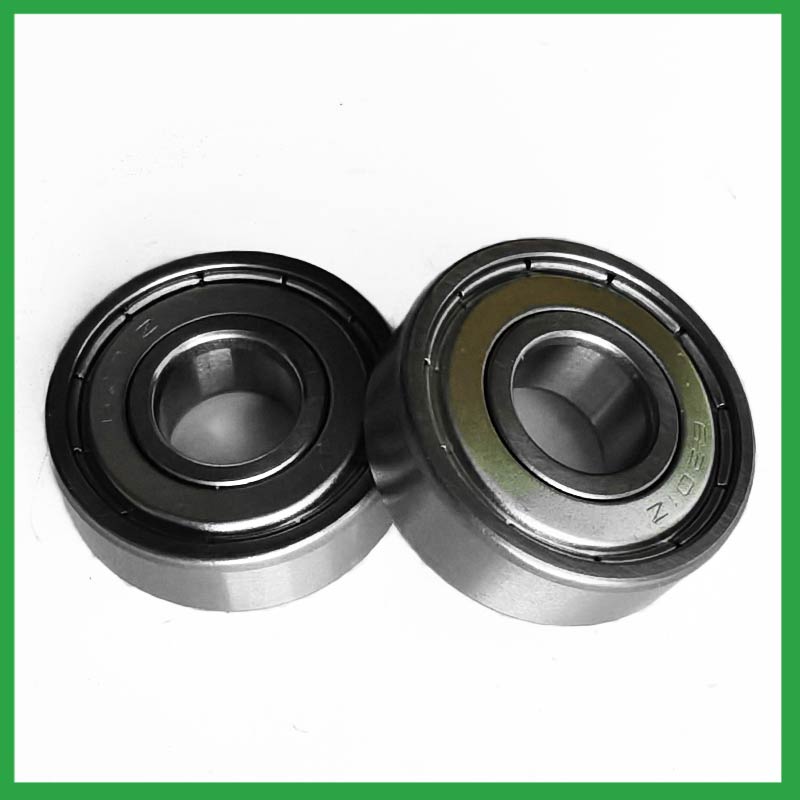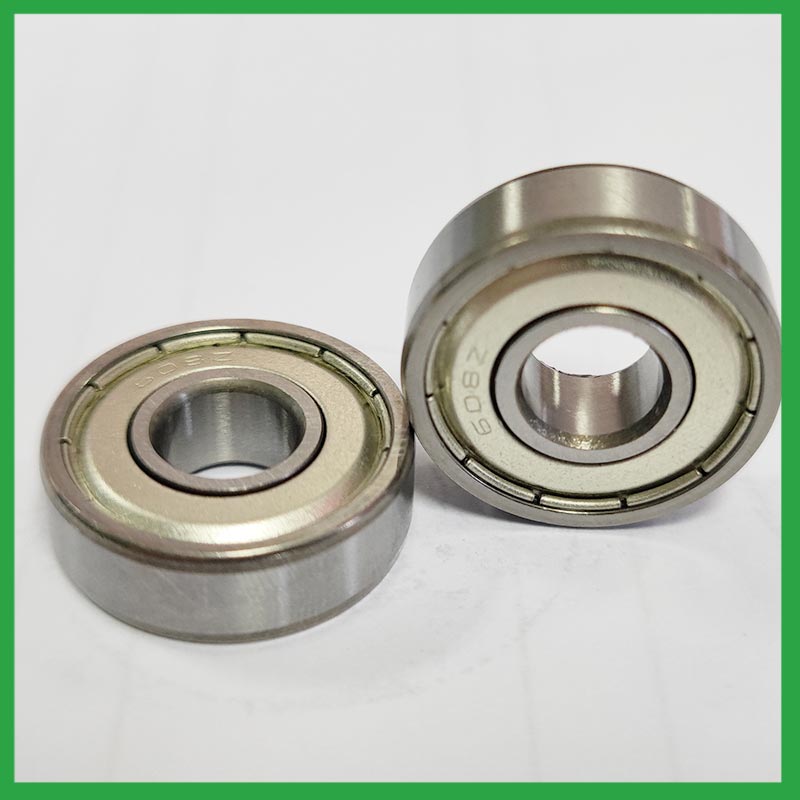2024-10-14
Ball bearings are a critical component in various mechanical systems, providing smooth motion and reducing friction between moving parts. They are used in numerous industries, from automotive to aerospace, due to their ability to support high-speed applications and manage loads effectively. But when it comes to high-speed operations, are ball bearings truly the best choice? At Nide International, we specialize in providing precision ball bearings that are engineered to meet the highest performance standards in a wide range of applications. In this article, we will examine the factors that make ball bearings ideal for high-speed operations and explore whether they are always the best choice for such applications.
Ball bearings are mechanical components that consist of rolling elements (balls) positioned between two races, an inner and an outer ring. These components allow for smooth and efficient rotation by minimizing friction between moving parts. The primary purpose of ball bearings is to support radial and axial loads while enabling the shaft to rotate freely.
At Nide International, our ball bearings, such as the NBX Precision Series, are manufactured with tight tolerances and advanced materials, ensuring reliable performance even under demanding conditions.

Ball bearings are widely used in high-speed applications because of their unique characteristics that make them suitable for rapid rotation. Here are some reasons why ball bearings are often chosen for high-speed operations:
Low Friction: Ball bearings offer low rolling friction due to the spherical shape of the rolling elements. This low friction allows for efficient movement at high speeds, reducing the amount of heat generated during operation. For instance, our Nide High-Speed 6200 Series ball bearings are designed to operate with minimal friction at speeds exceeding 10,000 RPM.
High Precision: Precision is critical in high-speed applications where even small misalignments can result in performance degradation. Ball bearings are available in high-precision grades, such as ABEC 7 or ISO P4, which ensure minimal radial and axial play, resulting in smooth operation even at high speeds.
Durability: Modern ball bearings, such as those offered by Nide International, are manufactured from materials like high-carbon chrome steel or ceramic. These materials provide excellent wear resistance and durability, even under extreme conditions. For example, ceramic ball bearings can operate at higher speeds due to their reduced density and lower friction coefficient.
Heat Management: In high-speed operations, managing heat is crucial to avoid premature bearing failure. Ball bearings are designed to operate efficiently at high temperatures, with advanced lubrication systems that help dissipate heat and ensure a long operational life. At Nide International, our bearings are tested to maintain optimal performance at temperatures up to 150°C (302°F) for steel bearings and 250°C (482°F) for ceramic variants.
Versatility: Ball bearings can handle both radial and axial loads, making them versatile for applications where different load types need to be managed. This versatility makes them suitable for high-speed applications in sectors like aerospace, automotive, and industrial machinery.
While ball bearings are excellent for high-speed operations, there are certain limitations that need to be considered:
Lubrication Requirements: High-speed ball bearings often require sophisticated lubrication systems to maintain efficiency and prevent overheating. Improper lubrication can lead to increased friction, higher temperatures, and reduced bearing life. For instance, high-speed bearings may require specialty lubricants like PTFE-based greases or oils with low viscosity to minimize drag.
Load Capacity: While ball bearings are suitable for handling moderate loads, they may not be the best option for applications involving extremely high loads. In such cases, other types of bearings, like roller bearings, may provide better performance due to their larger contact area with the races.
Noise and Vibration: At very high speeds, ball bearings may generate more noise and vibration compared to other types of bearings, particularly if they are not perfectly aligned. Vibration and noise reduction is a key factor in sensitive applications like medical equipment and precision machinery.

While ball bearings are often the best option for many high-speed applications, certain situations may call for alternative bearing types. Here are a few scenarios where other bearing solutions might be more suitable:
Extremely High Loads: For applications that require high load-carrying capacity, tapered roller bearings or spherical roller bearings may provide better performance. Roller bearings distribute the load across a larger surface area, making them more suitable for heavy-duty operations.
Axial-Only Load Handling: In applications where only axial loads are present, thrust bearings may be a better option. Thrust bearings are specifically designed to handle axial forces and provide a stable and efficient operation in these conditions.
Magnetic Bearings for Ultra-High Speeds: In applications requiring ultra-high-speed rotation, such as in turbines or advanced aerospace equipment, magnetic bearings may be more appropriate. These bearings can achieve speeds of up to 100,000 RPM and eliminate friction by using magnetic fields to suspend the shaft without physical contact.
Despite these alternatives, ball bearings remain one of the most widely used solutions for high-speed operations due to their balance of cost-effectiveness, ease of use, and reliable performance.
Ball bearings are an excellent choice for high-speed operations due to their low friction, high precision, durability, and versatility. However, selecting the right ball bearing for your application depends on factors like load capacity, lubrication, temperature tolerance, and operating conditions. At Nide International, we offer a wide range of precision ball bearings, including the NBX Precision Series and Nide High-Speed 6200 Series, designed to meet the demands of high-speed and high-performance applications.
When choosing a ball bearing for high-speed operations, it’s important to consider the specific needs of your machinery and the working environment. In many cases, ball bearings will be the ideal solution, but other types of bearings may be more suitable for certain specialized applications.

Q: What is the maximum speed that Nide International's ball bearings can handle?
A: Our Nide High-Speed 6200 Series ball bearings can handle speeds exceeding 10,000 RPM, while ceramic ball bearings can operate at even higher speeds due to their lower friction and lighter weight.
Q: Are ceramic ball bearings better than steel ball bearings for high-speed applications?
A: Yes, ceramic ball bearings offer several advantages over steel bearings in high-speed applications. They are lighter, generate less friction, and can operate at higher temperatures, making them ideal for high-speed and high-temperature environments.
Q: How can I reduce the noise generated by ball bearings in high-speed applications?
A: To reduce noise, it’s essential to ensure proper alignment, use high-quality lubricants, and choose bearings with higher precision grades, such as ABEC 7 or ISO P4. Additionally, maintaining optimal lubrication levels can help minimize vibration and noise.
Q: What is the typical service life of ball bearings in high-speed operations?
A: The service life of ball bearings in high-speed applications depends on factors such as load, lubrication, and operating conditions. Properly lubricated and maintained bearings, such as our NBX Precision Series, can last for thousands of operational hours without significant wear.